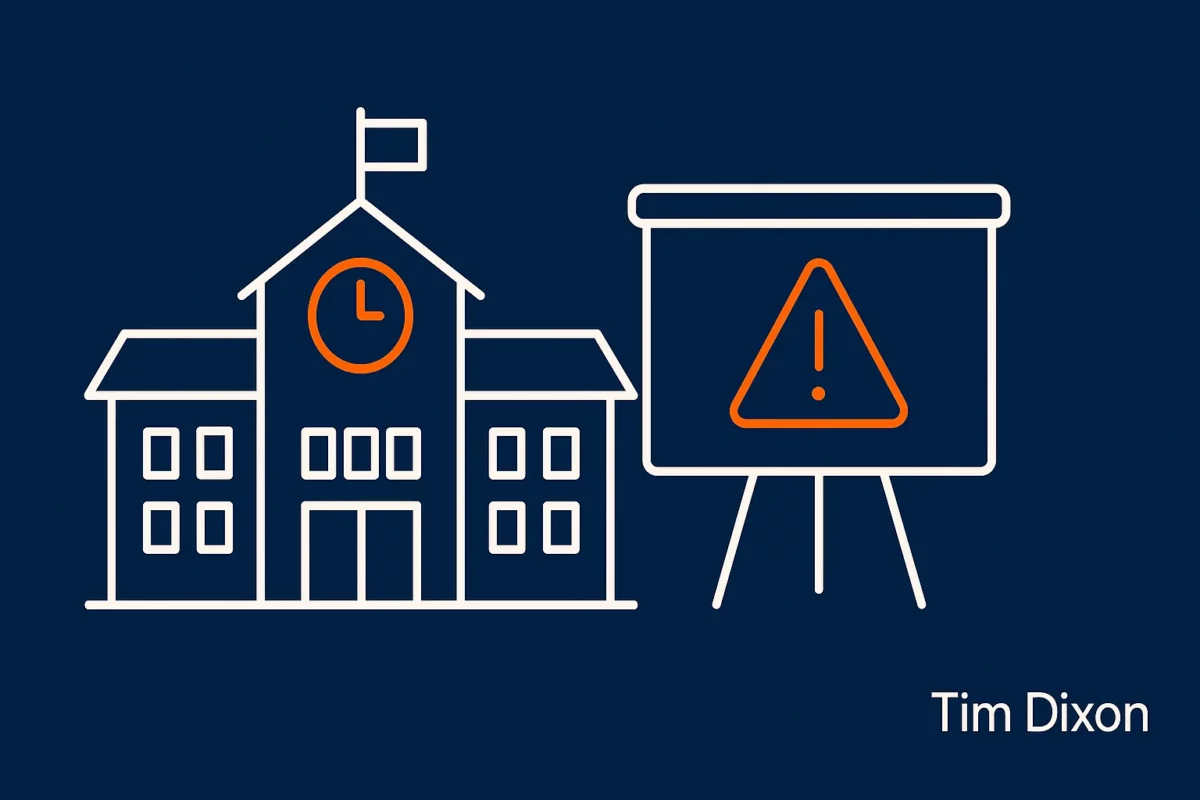Walking into a secondary school open evening feels a bit like stepping into the future. Your child’s next big chapter is right there in front of you. The staff are warm, the students are enthusiastic guides, and the facilities are on full display.
At this particular school, I noticed some really positive touches. Adjustable-height sinks in the food tech rooms. Wide corridors and automatic doors that meant wheelchair users wouldn’t feel excluded. From a mobility perspective, they’d clearly put thought into accessibility.
But that’s only half the picture.
The Hidden Barriers
As the evening went on, another layer became clear: school accessibility barriers aren’t always about ramps and doorways. Sometimes they’re about how information is presented.
The main presentation, for example, used slides with low contrast text and crowded layouts. There were no handouts, so I took the opportunity to chat with the Head Teacher afterwards. He had already realised that the presentation wouldn’t have been accessible and listened to what could be done to make it accessible for me.
Inclusion isn’t just about being able to get into the room. It’s about being able to take part fully once you’re there. And too often, we overlook this second step.
Why It Matters
Secondary school is already a leap into the unknown for kids. For students with sensory impairments, neurodiversity, or cognitive differences, those hidden barriers make the leap even bigger.
So if the school doesn’t get accessibility right when they are trying to make a good first impression, what’s day-to-day classroom life going to be like? Worksheets, online platforms, lesson slides… these are the real battlegrounds for inclusion.
The truth is, many schools still see accessibility as an add-on. Something to “fix” when a need arises. But inclusive design works better when it’s built in from the start. It doesn’t just benefit blind or neurodiverse students—it helps everyone. Clearer layouts, better contrast, simpler communication. Who wouldn’t gain from that?
Moving from Access to Inclusion
The school did a solid job on physical access, and that deserves recognition. But inclusion is more than ticking the box of ramps and lifts. It’s about culture.
That means:
- Accessible communication. High-contrast slides, simple layouts, plain English.
- Accessible learning materials. Worksheets, websites, and platforms designed with everyone in mind.
- Consistency. Accessibility shouldn’t be a “special adjustment”—it should be part of the everyday standard.
When schools embrace this mindset, they don’t just remove barriers for a few. They create a better learning environment for the whole community.
Conclusion
My evening at the school was a reminder that school accessibility barriers aren’t always visible. Physical access is vital, but so is the ability to see, process, and understand what’s going on.
If schools want to prepare every student for success, accessibility can’t be an afterthought. It has to be baked in—from the first open evening to the final exam.
And when that happens, we’ll stop talking about barriers altogether and start talking about opportunities.
Tell me what you think in the comments below or on X @timdixon82

